Spain is a captivating destination known for its rich history, stunning landscapes, and vibrant culture. If you’re planning your first trip to this incredible country, here are 20 essential tips to ensure you make the most of your journey, along with a handy Spanish dictionary to help you navigate your travels.
Table of Contents
1. Explore Madrid and Barcelona
Madrid, the capital of Spain, and Barcelona, famous for its architecture and beaches, are two must-see cities. Both offer a unique combination of history, culture, and lively nightlife. Madrid is known for its art museums like the Prado and its bustling plazas such as Puerta del Sol and Plaza Mayor.
When visiting Madrid, make sure to spend some time at the Retiro Park, a green oasis perfect for a relaxing stroll or a boat ride on its central lake. Additionally, the Royal Palace of Madrid, with its opulent rooms and beautiful gardens, is a must-see for history buffs.
Barcelona, on the other hand, is renowned for its modernist landmarks designed by Antoni Gaudí. The Sagrada Familia, still under construction after more than a century, is a breathtaking example of his unique style. Parc Güell, with its colorful mosaics and playful architecture, offers stunning views of the city.
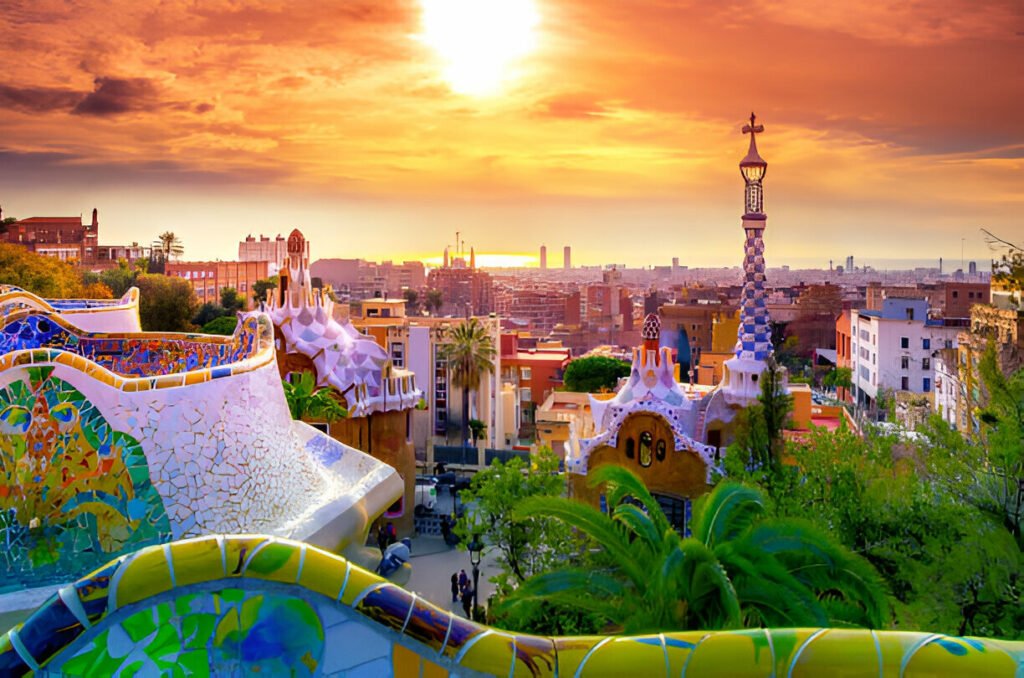
The Gothic Quarter in Barcelona is another highlight, with its narrow medieval streets, hidden squares, and historical buildings. Don’t miss the Barcelona Cathedral and the lively atmosphere of La Rambla, where street performers and market stalls abound.
Madrid Coordinates: 40.4168° N, 3.7038° W
Barcelona Coordinates: 41.3851° N, 2.1734° E
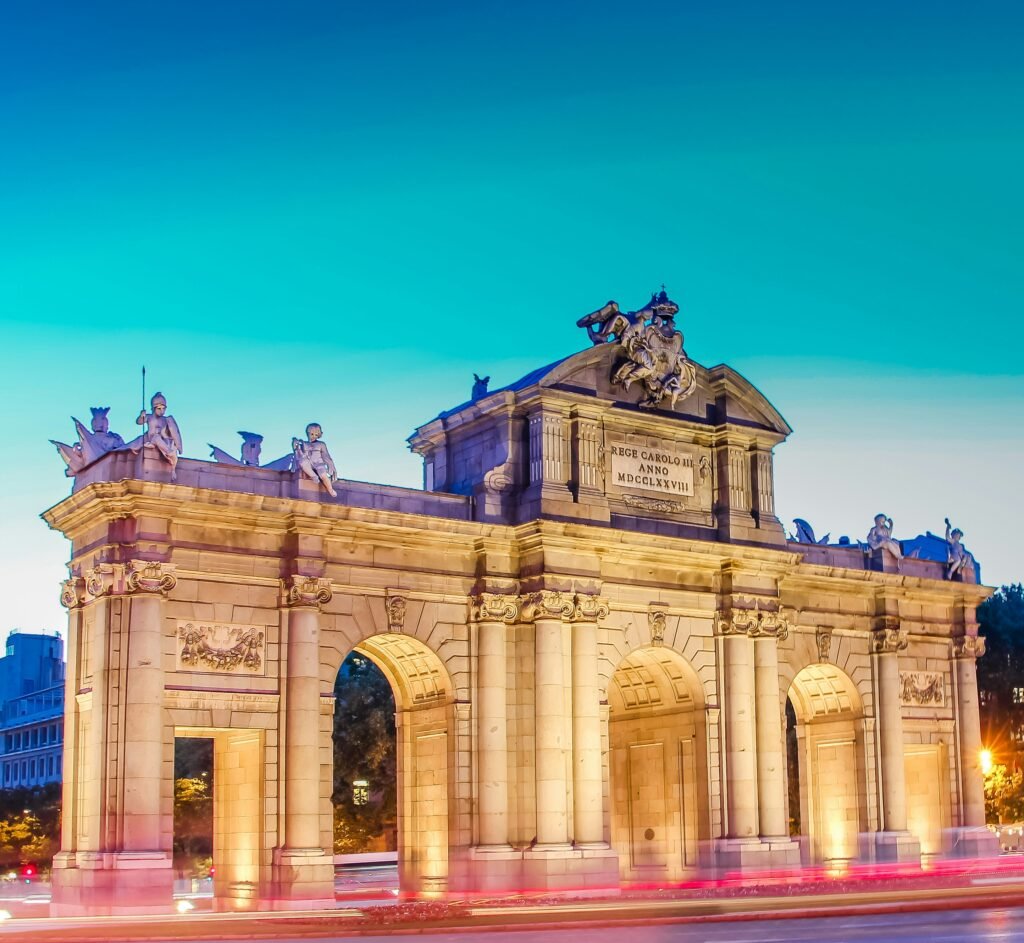
In Barcelona, don’t forget to visit the famous beach of Barceloneta. It’s a great spot to relax and enjoy the Mediterranean Sea. Additionally, the city’s nightlife, particularly in the El Born and El Raval districts, offers a vibrant mix of bars, clubs, and live music venues.
2. Visit the Beaches of Costa del Sol
The Costa del Sol is known for its beautiful beaches and sunny weather. Towns like Marbella, Málaga, and Torremolinos offer a perfect blend of relaxation and vibrant nightlife. Each beach town has its own unique charm and attractions.
Marbella is famous for its luxurious resorts, upscale boutiques, and the picturesque Old Town, with its narrow streets and charming plazas. The Puerto Banús marina is the place to see and be seen, filled with luxury yachts and high-end restaurants.
Málaga, the birthplace of Pablo Picasso, is a city rich in history and culture. Visit the Alcazaba, a Moorish fortress with beautiful gardens, and the nearby Roman Theatre. The Picasso Museum is a must-visit for art lovers, showcasing many of the artist’s works.
Marbella Coordinates: 36.5101° N, 4.8824° W
Málaga Coordinates: 36.7213° N, 4.4214° W
Torremolinos Coordinates: 36.6211° N, 4.4997° W
Torremolinos offers a more laid-back vibe, with wide sandy beaches and a variety of water sports. The town is also known for its vibrant nightlife, with numerous bars and clubs catering to all tastes. The nearby Aqualand water park is a great option for families.
For a quieter experience, head to the beaches of Nerja. The Balcón de Europa, a stunning viewpoint overlooking the Mediterranean, offers spectacular views. The nearby Caves of Nerja, with their impressive stalactites and stalagmites, are also worth a visit.

3. Taste Spanish Cuisine
Don’t miss the opportunity to try traditional dishes like paella, tapas, and churros. Spanish cuisine is renowned for its flavors and regional variations. Each region of Spain has its own culinary specialties that reflect its local ingredients and traditions.
Paella, originating from Valencia, is a delicious rice dish typically made with seafood, chicken, or rabbit, and flavored with saffron and a variety of spices. Enjoying a paella by the sea is a quintessential Spanish experience.
Tapas are small dishes that can be hot or cold, and they are perfect for sharing. Popular tapas include patatas bravas (fried potatoes with a spicy tomato sauce), albondigas (meatballs), and gambas al ajillo (garlic shrimp). Tapas bars are found throughout Spain, each offering its own unique twist on these classic dishes.
Paella Coordinates: Valencia
For those with a sweet tooth, churros con chocolate is a must-try. These fried dough pastries, typically enjoyed for breakfast or as a snack, are served with a thick, rich hot chocolate for dipping. They are especially popular during Spanish festivals and celebrations.
Spain is also famous for its cured meats, such as jamón ibérico and chorizo, which are often served as part of a tapas spread or as a standalone delicacy. Pair these with a glass of Spanish wine, and you have a perfect Spanish culinary experience.
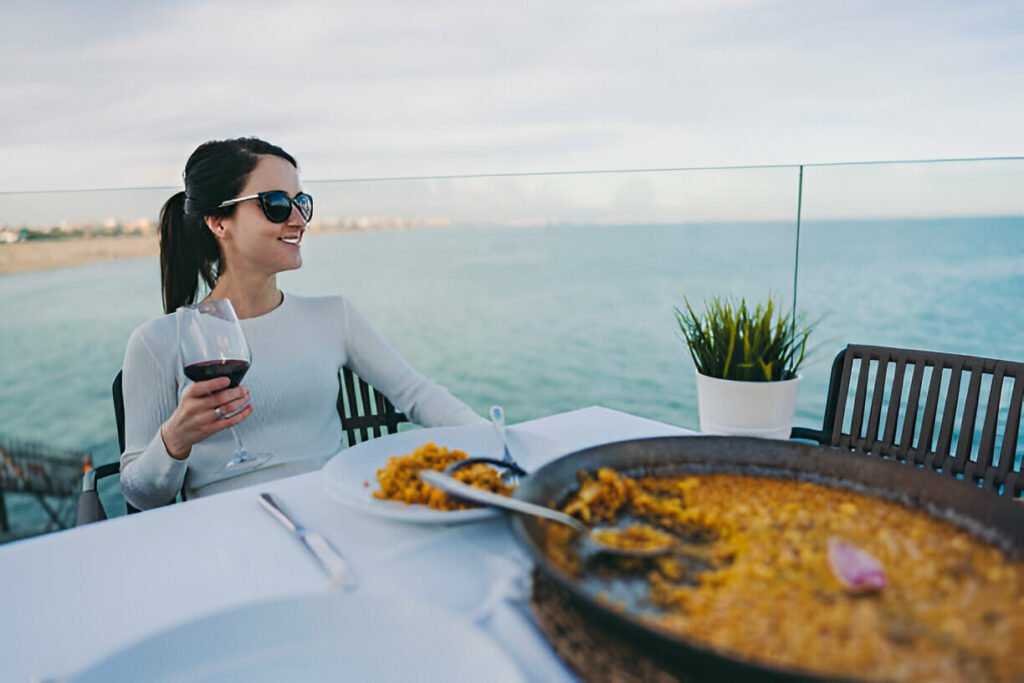
4. Learn a Few Words in Spanish
Although many Spaniards speak English, learning a few phrases in Spanish can enhance your experience and show respect for the local culture. Simple words and phrases like “hola” (hello), “gracias” (thank you), “por favor” (please), and “disculpe” (excuse me) can make a big difference in your daily interactions.
Making an effort to speak the local language can help you connect more deeply with the people and the culture. Spaniards appreciate when visitors try to speak Spanish, and even a basic understanding can make navigating less touristy areas much easier.
Here are some additional phrases that can be useful:
- ¿Dónde está…? – Where is…?
- ¿Cuánto cuesta? – How much does it cost?
- ¿Habla inglés? – Do you speak English?
- Puede ayudarme? – Can you help me?
These phrases will be particularly useful in restaurants, shops, and when asking for directions. Remember, even if your Spanish isn’t perfect, the effort will be appreciated and can lead to more meaningful interactions.
5. Use Public Transportation
Public transportation in Spain is efficient and affordable. Trains, metros, and buses are great ways to get around cities and the countryside. Madrid and Barcelona have extensive metro systems that make exploring all areas of the cities convenient and quick.
Madrid Metro Map: Madrid Metro
Barcelona Metro Map: Barcelona Metro
The AVE high-speed trains connect major cities like Madrid, Barcelona, Seville, and Valencia, significantly reducing travel time between destinations. These trains are comfortable, punctual, and offer scenic views of the Spanish countryside.
Spanish Railway Map: Renfe
In addition to trains, buses are a practical option for traveling to destinations not served by the railway network. Cities and towns across Spain have reliable bus services, and long-distance buses connect even the most remote areas.
6. Explore Historic Towns
Spain is filled with historic towns like Toledo, Segovia, and Granada, where you can feel the medieval history and traditional architecture. These towns offer a glimpse into Spain’s rich past and provide an authentic experience of Spanish culture.
Toledo, a UNESCO World Heritage site, is known as the “City of Three Cultures” because of its historical co-existence of Christians, Muslims, and Jews. Its stunning cathedral, medieval bridges, and narrow winding streets make it a must-visit.
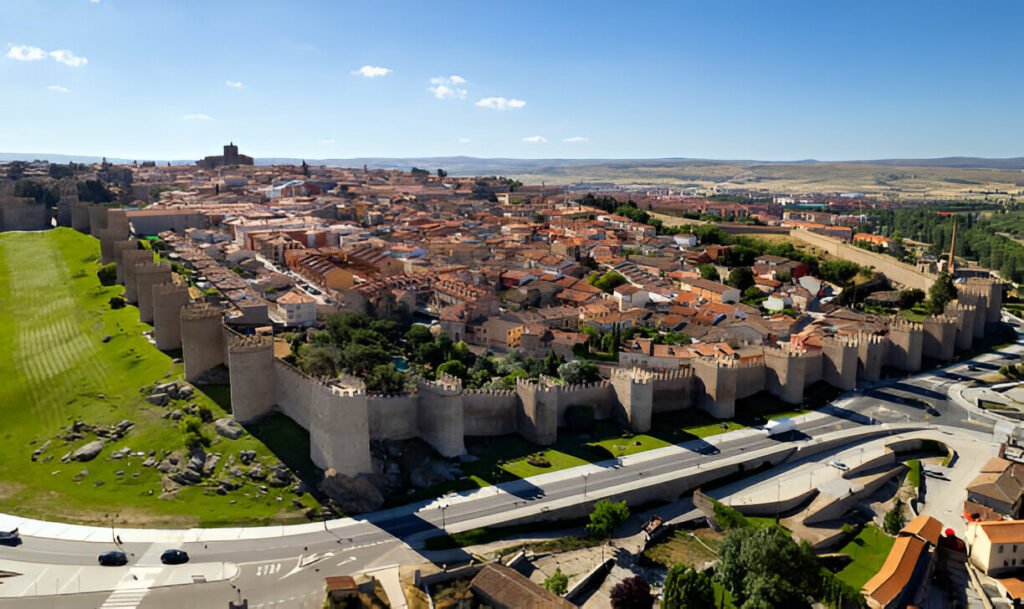
Segovia is famous for its well-preserved Roman aqueduct and the Alcázar of Segovia, a fairy-tale castle that is said to have inspired Walt Disney’s Cinderella Castle. The town’s old quarter, with its medieval walls and charming squares, is a delight to explore.
Toledo Coordinates: 39.8628° N, 4.0273° W
Segovia Coordinates: 40.9429° N, 4.1080° W
Granada Coordinates: 37.1773° N, 3.5986° W
Granada is home to the Alhambra, a stunning example of Moorish architecture set against the backdrop of the Sierra Nevada mountains. The city’s Albaicín district, with its narrow streets and whitewashed houses, offers breathtaking views of the Alhambra.
Each of these towns offers a unique historical and cultural experience. Spend some time walking their streets, visiting local museums, and enjoying traditional Spanish cuisine in their many charming restaurants and cafes.
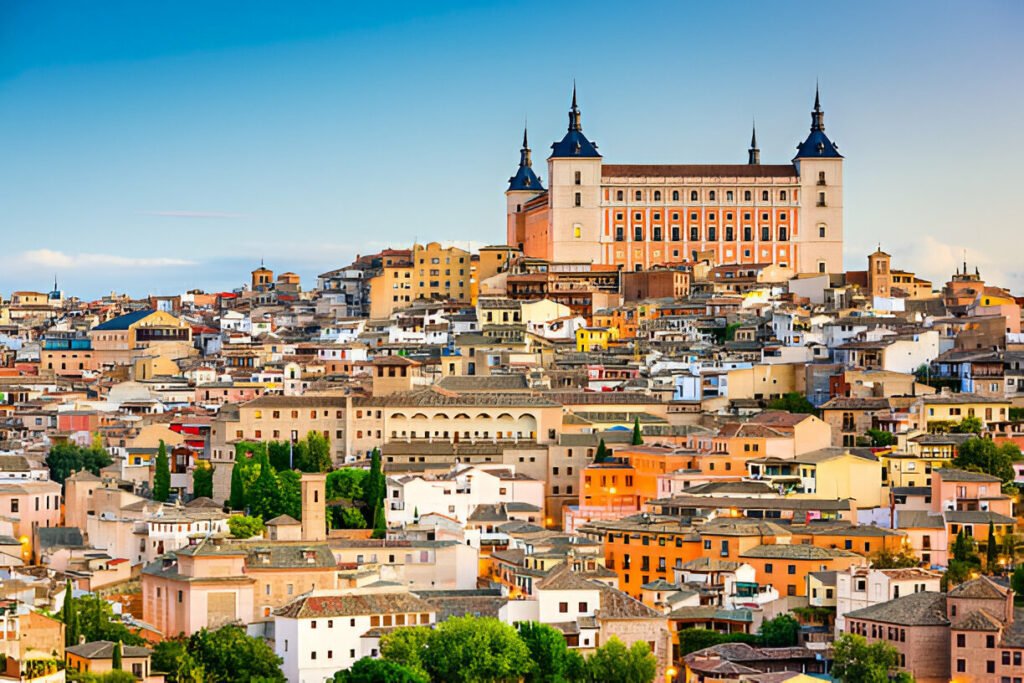
7. Visit the Alhambra
The Alhambra in Granada is one of Spain’s most iconic landmarks. This Moorish palace and fortress complex offers stunning architecture and beautiful gardens. It’s a testament to the intricate art and architecture of the Nasrid Dynasty.
Alhambra Coordinates: 37.1760° N, 3.5881° W
Be sure to book your tickets in advance, as this popular attraction can sell out quickly. When visiting, take your time to explore the Alhambra’s many sections, including the Nasrid Palaces, the Generalife gardens, and the Alcazaba fortress.
The Nasrid Palaces are the highlight of the Alhambra, with their ornate stucco work, intricate tile mosaics, and stunning courtyards like the Court of the Lions. Each room and courtyard is a masterpiece of Islamic art and architecture.
The Generalife, a summer palace with beautiful gardens, offers a peaceful retreat from the main palaces. Its lush greenery, fountains, and panoramic views of Granada make it a perfect place to relax and take in the beauty of the Alhambra.
The Alcazaba, the oldest part of the Alhambra, is a fortress that offers spectacular views of Granada and the surrounding mountains. Climb to the top of the towers for some of the best views in the city.
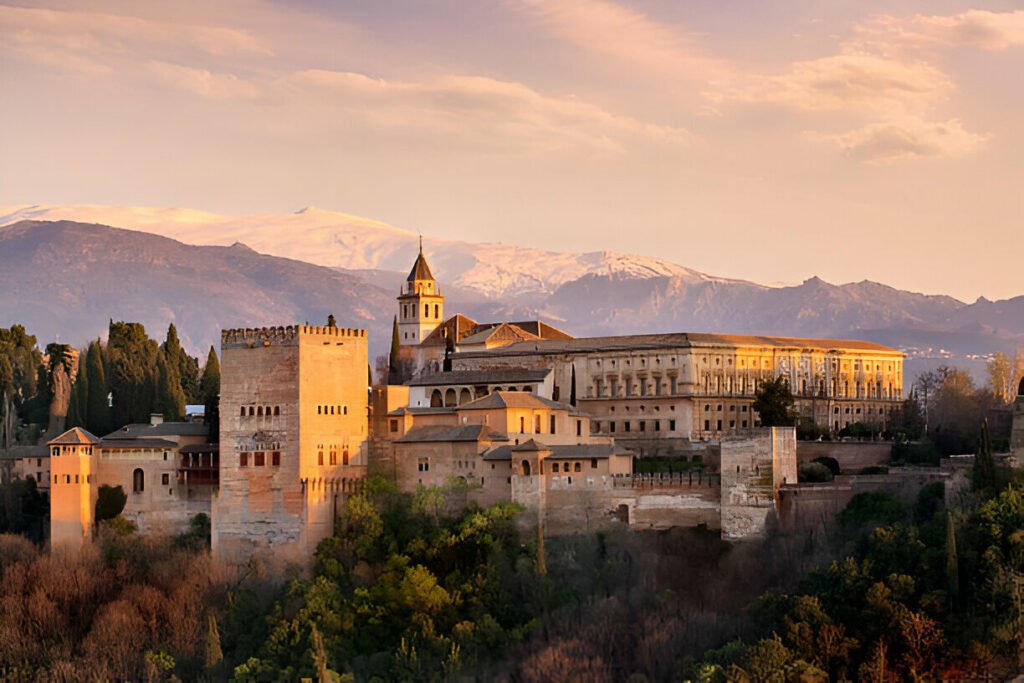
8. Bring a Plug Adapter
Electrical outlets in Spain use type C and F plugs, with a voltage of 230V. Make sure to bring an adapter to charge your electronic devices. While many hotels may provide adapters, it’s always a good idea to have your own to avoid any inconvenience.
In addition to a plug adapter, consider bringing a portable charger to ensure your devices are always powered up, especially if you plan to spend a lot of time exploring outdoors. This can be particularly useful if you rely on your phone for navigation and photography.
9. Enjoy the Viewpoints
Spain offers many viewpoints (miradores) that provide stunning panoramic views. In Madrid, visit the rooftop of the Círculo de Bellas Artes, and in Barcelona, climb up to the Bunkers del Carmel for incredible cityscapes.
The Círculo de Bellas Artes rooftop offers one of the best views of Madrid’s skyline, including iconic landmarks like the Metropolis building and Gran Via. It’s a great spot for photography and enjoying a drink at the rooftop bar.
Círculo de Bellas Artes Coordinates: 40.4189° N, 3.6953° W
Bunkers del Carmel Coordinates: 41.4186° N, 2.1584° E
In Barcelona, the Bunkers del Carmel provide a 360-degree view of the city, from the Sagrada Familia to the Mediterranean Sea. It’s a popular spot for locals and tourists alike, especially at sunset when the city is bathed in golden light.
Other notable viewpoints include the Mirador de San Nicolás in Granada, which offers a stunning view of the Alhambra with the Sierra Nevada mountains in the background, and the Mirador del Río in Lanzarote, with its breathtaking views over the island and the Atlantic Ocean.
10. Join Local Festivals
Local festivals in Spain are a great way to experience the culture and traditions. Don’t miss the famous La Tomatina in Buñol, Running of the Bulls in Pamplona, and Semana Santa (Holy Week) processions.
La Tomatina, held annually in Buñol, is a fun and chaotic festival where participants throw tomatoes at each other. It’s a unique and unforgettable experience, drawing visitors from around the world.
La Tomatina Coordinates: 39.4173° N, 0.7900° W
The Running of the Bulls in Pamplona is a thrilling event held during the San Fermín festival. Participants run through the streets ahead of a group of charging bulls. It’s a tradition steeped in history and excitement.
Pamplona Coordinates: 42.8125° N, 1.6458° W
Semana Santa, or Holy Week, is celebrated with elaborate processions in cities like Seville, Malaga, and Granada. These processions, featuring religious floats, music, and penitents, are a deeply moving and culturally significant experience.
11. Go Hiking
Spain offers excellent hiking trails, from the Pyrenees to the Camino de Santiago. Hiking is a great way to explore the natural beauty of the country and connect with its diverse landscapes.
The Pyrenees, a mountain range between Spain and France, offers stunning scenery and challenging trails. It’s a haven for outdoor enthusiasts, with opportunities for hiking, climbing, and skiing.
Pyrenees Coordinates: 42.6656° N, 0.6528° E
The Camino de Santiago, a historic pilgrimage route, attracts hikers from around the world. The most popular route, the Camino Francés, starts in the Pyrenees and ends in Santiago de Compostela, covering approximately 800 kilometers.
Camino de Santiago Coordinates: 42.8782° N, 8.5448° W
The Rías Baixas in Galicia offer beautiful coastal trails, with stunning views of the Atlantic Ocean and lush landscapes. The Picos de Europa, another mountain range in northern Spain, boasts dramatic scenery and challenging hikes.
12. Visit Museums and Monuments
Spain has a rich cultural heritage with many museums and monuments. Don’t miss the Prado Museum in Madrid, the Guggenheim Museum in Bilbao, and the Sagrada Familia in Barcelona.
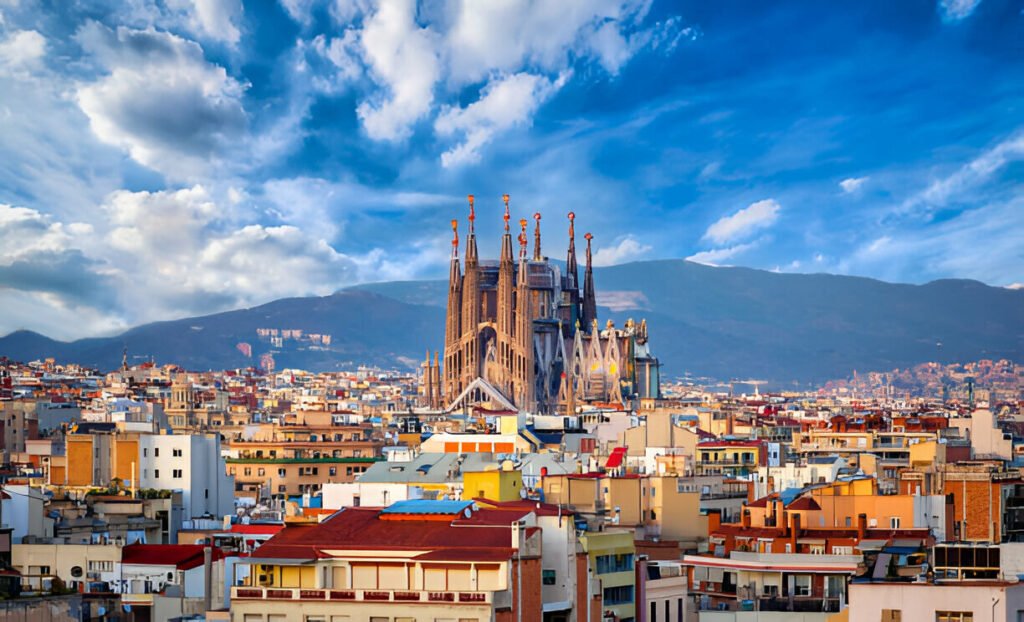
The Prado Museum houses one of the finest collections of European art, including works by Velázquez, Goya, and El Greco. It’s a must-visit for art lovers and offers a deep dive into Spain’s artistic heritage.
Prado Museum Coordinates: 40.4138° N, 3.6921° W
The Guggenheim Museum in Bilbao, designed by Frank Gehry, is an architectural marvel and a leading center for contemporary art. Its striking design and diverse exhibitions make it a highlight of any visit to northern Spain.
Guggenheim Museum Coordinates: 43.2686° N, -2.9344° W
The Sagrada Familia, a basilica designed by Antoni Gaudí, is an iconic symbol of Barcelona. Its intricate facades and towering spires are a testament to Gaudí’s genius, and the interior is equally breathtaking.
13. Discover Valencia
Valencia is famous for its City of Arts and Sciences, beautiful beaches, and vibrant festivals. It’s also the birthplace of paella, Spain’s most famous dish.
The City of Arts and Sciences is a futuristic complex featuring an opera house, science museum, and oceanographic park. It’s a must-see for its striking architecture and interactive exhibits.
Valencia Coordinates: 39.4699° N, 0.3763° W
City of Arts and Sciences Coordinates: 39.4551° N, 0.3516° W
Valencia’s beaches, such as Malvarrosa and El Saler, are perfect for relaxing and enjoying the Mediterranean climate. The city also hosts the famous Las Fallas festival, a lively event featuring parades, fireworks, and the burning of large papier-mâché figures.
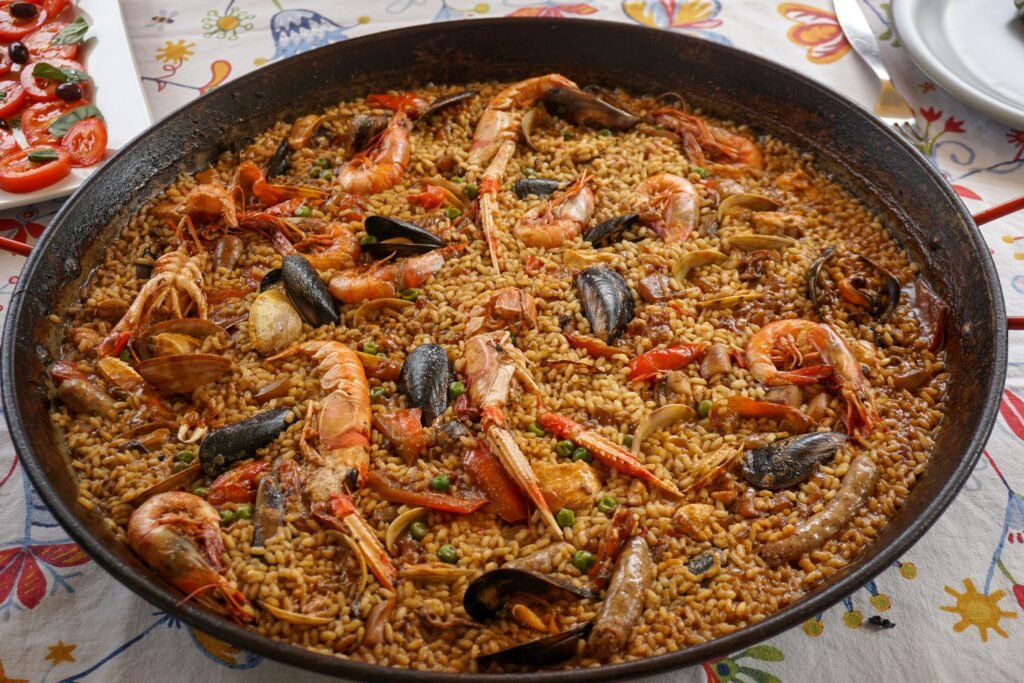
14. Be Aware of Opening Hours
Opening hours in Spain can be different from what you’re used to. Many shops close in the afternoon for siesta and reopen in the evening. Plan your activities accordingly to make the most of your time.
In general, shops and businesses in Spain may close between 2 PM and 5 PM and stay open until 8 or 9 PM. This siesta time allows for a break during the hottest part of the day, especially in the summer months.
Restaurants typically serve lunch between 1 PM and 3 PM and dinner from 8 PM to 11 PM. Keep this in mind when planning your meals, and consider making reservations, especially for popular dining spots.
15. Enjoy the Climate
Spain has a diverse climate with hot summers and mild winters. The best time to visit is during spring and autumn when the weather is pleasant and there are fewer tourists. These seasons are ideal for outdoor activities and exploring the country’s natural and cultural attractions.
The coastal regions, such as Costa del Sol and Costa Brava, enjoy mild temperatures year-round, making them popular destinations for beach lovers. The interior of Spain, including cities like Madrid and Seville, can get quite hot in the summer, so plan accordingly.
In the winter, the southern regions remain relatively warm, while the northern and mountainous areas can be cooler and even see snow, making them perfect for winter sports enthusiasts.
16. Be Respectful
Spaniards are known for their hospitality. Be polite and respectful, especially when visiting rural areas and religious sites. Dress modestly when visiting churches and observe local customs and etiquette.
When dining out, it’s customary to greet the staff and say goodbye when leaving. Tipping is appreciated but not obligatory; a small tip for good service is sufficient.
17. Visit the Balearic and Canary Islands
The Balearic Islands (Mallorca, Menorca, Ibiza) and the Canary Islands (Tenerife, Gran Canaria) are famous for their beautiful beaches, vibrant nightlife, and outdoor activities.
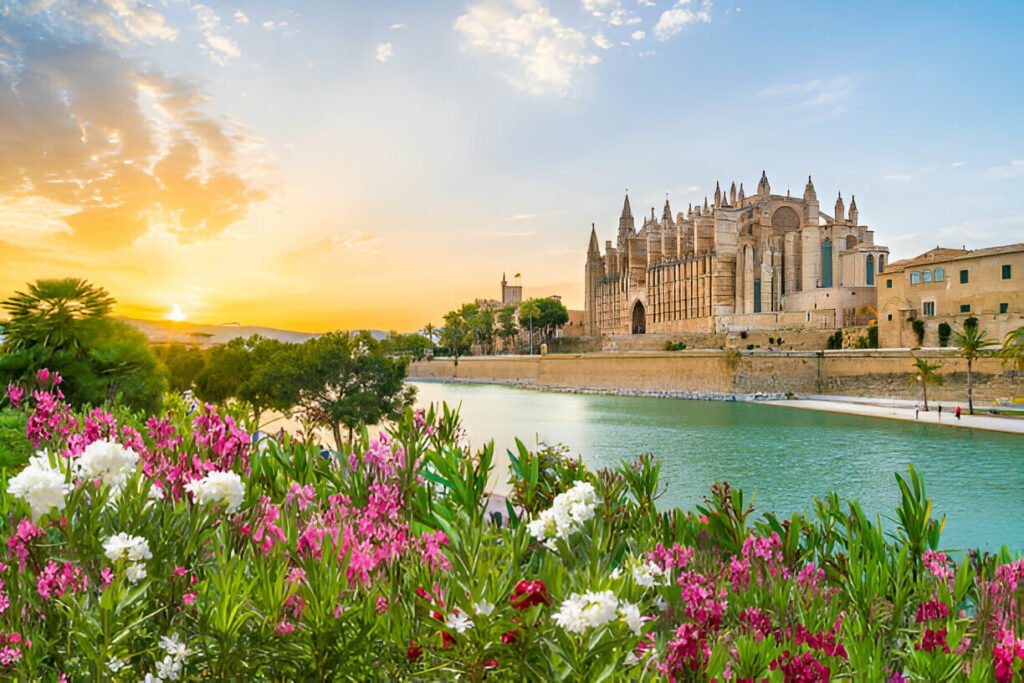
Mallorca offers stunning beaches, charming villages, and the vibrant capital city of Palma. Ibiza is known for its world-class nightlife and beautiful coves. Menorca is quieter, with pristine beaches and a relaxed atmosphere.
Mallorca Coordinates: 39.6953° N, 3.0176° E
Tenerife Coordinates: 28.2916° N, 16.6291° W
The Canary Islands, located off the coast of Africa, have a unique volcanic landscape and a mild climate year-round. Tenerife and Gran Canaria are popular for their beaches, hiking trails, and lively towns.
18. Shop for Souvenirs
Spain is known for its handicrafts, including ceramics, leather goods, and traditional textiles. Bringing home a piece of local craftsmanship is a great way to remember your trip. Look for unique items like hand-painted ceramics from Talavera de la Reina or leather goods from Ubrique.
Ceramics: Talavera de la Reina
Leather Goods: Ubrique
Traditional textiles, such as mantones (shawls) and mantillas (lace veils), are also popular souvenirs. Visit local markets and artisan shops to find authentic and beautifully crafted items.
19. Wear Comfortable Shoes
Many Spanish cities have cobblestone streets and steep hills. Comfortable shoes are essential for exploring historic centers on foot. Whether you’re wandering through the Gothic Quarter in Barcelona or climbing the hills of Toledo, good footwear will make your experience much more enjoyable.
Bring shoes that are well-broken in to avoid blisters and discomfort. Additionally, consider packing a pair of sandals or flip-flops for the beach and casual outings.
20. Relax and Enjoy
Above all, remember to relax and enjoy your trip. Spain is a country to be explored at a leisurely pace, savoring each moment and each landscape. Take time to sit in a café, people-watch, and absorb the unique atmosphere of each place you visit.
Let yourself be carried away by the rhythm of Spanish life, whether it’s enjoying a long lunch, taking a siesta, or dancing the night away at a local fiesta. Spain offers endless opportunities for discovery and delight.
Ready to explore Spain? Book your flight, pack your bags, and get ready for an unforgettable adventure! Click here to discover the best travel deals to Spain and start planning your dream trip today.
Essential Words and Phrases for Traveling to Spain
Basic Greetings and Courtesy
- Hola – Hello
- Buenos días – Good morning
- Buenas tardes – Good afternoon
- Buenas noches – Good evening / Good night
- Adiós – Goodbye
- Hasta luego – See you later
- Por favor – Please
- Gracias – Thank you
- De nada – You’re welcome
- Perdón – Excuse me / Sorry
- Con permiso – Excuse me (to pass by)
Common Questions
- ¿Dónde está…? – Where is…?
- ¿Cuánto cuesta? – How much does it cost?
- ¿Habla inglés? – Do you speak English?
- ¿Cuál es tu nombre? – What is your name?
- ¿Puede ayudarme? – Can you help me?
- ¿Qué es esto? – What is this?
Directions
- Derecha – Right
- Izquierda – Left
- Recto – Straight ahead
- Cerca – Near
- Lejos – Far
- Aquí – Here
- Allí / Allá – There
Transportation
- Autobús – Bus
- Tren – Train
- Taxi – Taxi
- Metro – Subway
- Parada de autobús – Bus stop
- Estación de tren – Train station
- Aeropuerto – Airport
- Billete – Ticket
Accommodation
- Hotel – Hotel
- Habitación – Room
- Reserva – Reservation
- Check-in / Check-out – Check-in / Check-out
- Llave – Key
Dining
- Restaurante – Restaurant
- Café – Café
- Bar – Bar
- Menú – Menu
- Desayuno – Breakfast
- Almuerzo – Lunch
- Cena – Dinner
- Agua – Water
- Vino – Wine
- Cerveza – Beer
- Cuenta – Bill
- Propina – Tip
- Vegetariano/a – Vegetarian (male/female)
Shopping
- Tienda – Shop
- Mercado – Market
- Dinero – Cash
- Tarjeta de crédito – Credit card
- Abierto – Open
- Cerrado – Closed
Health and Emergencies
- Farmacia – Pharmacy
- Médico – Doctor
- Hospital – Hospital
- Emergencia – Emergency
- Ayuda – Help
Numbers
- Uno – One
- Dos – Two
- Tres – Three
- Cuatro – Four
- Cinco – Five
- Seis – Six
- Siete – Seven
- Ocho – Eight
- Nueve – Nine
- Diez – Ten
Days and Time
- Lunes – Monday
- Martes – Tuesday
- Miércoles – Wednesday
- Jueves – Thursday
- Viernes – Friday
- Sábado – Saturday
- Domingo – Sunday
- Hoy – Today
- Mañana – Tomorrow
- Ayer – Yesterday
- Mañana – Morning
- Tarde – Afternoon
- Noche – Night
- Horas – Hours
- Minutos – Minutes
Frequently Asked Questions (FAQ)
What is the best time to visit Spain?
The best time to visit Spain is during the spring (April to June) and autumn (September to November) when the weather is pleasant and there are fewer tourists. These seasons are ideal for exploring cities, beaches, and outdoor activities.
Do I need a visa to travel to Spain?
Visa requirements for Spain depend on your nationality. Citizens of the EU, EEA, and many other countries, including the USA, Canada, and Australia, do not need a visa for short stays (up to 90 days) for tourism. Always check the latest visa requirements before traveling.
Is it safe to travel to Spain?
Spain is generally a very safe country for travelers. However, like any popular tourist destination, it is important to be aware of your surroundings and take common-sense precautions, such as keeping an eye on your belongings and avoiding poorly lit areas at night.
What should I pack for a trip to Spain?
What you pack will depend on the season and regions you plan to visit. Generally, pack comfortable clothing, good walking shoes, a plug adapter, sunscreen, and any necessary medications. For summer, bring lightweight clothing and swimwear. In winter, pack warmer clothes, especially if visiting northern regions or mountains.
How can I travel between cities in Spain?
Spain has an excellent transportation network. High-speed trains (AVE) connect major cities like Madrid, Barcelona, Seville, and Valencia. Buses and domestic flights are also available for longer distances. Public transportation within cities is efficient, with metro, bus, and tram services.
What is the currency in Spain?
The currency in Spain is the Euro (€). Credit and debit cards are widely accepted, but it is also a good idea to carry some cash, especially in smaller towns and markets. ATMs are readily available in most areas.
What are some must-try Spanish dishes?
Some must-try Spanish dishes include paella, tapas, gazpacho, jamón ibérico, churros con chocolate, and tortilla española. Each region has its own specialties, so be sure to try local dishes wherever you go.




















